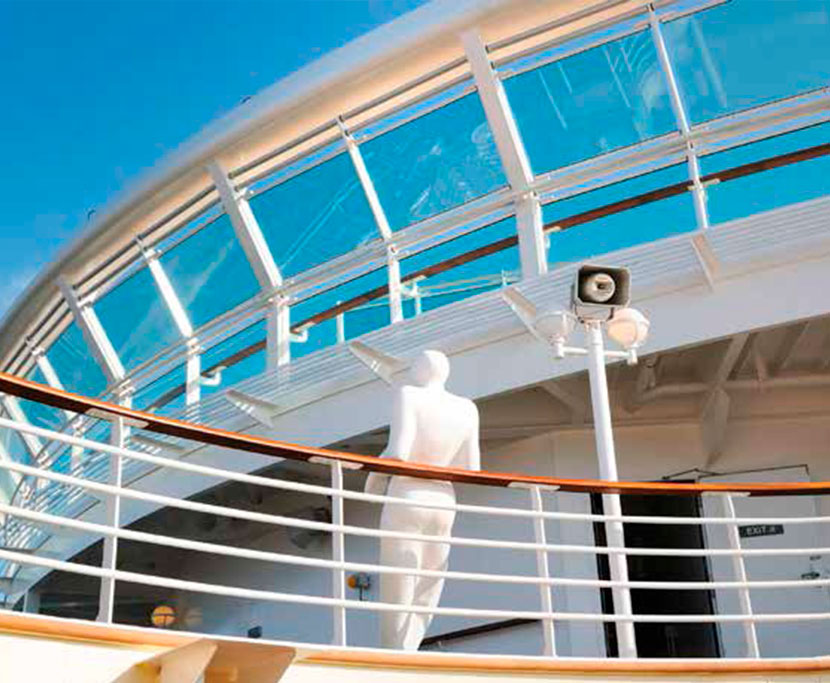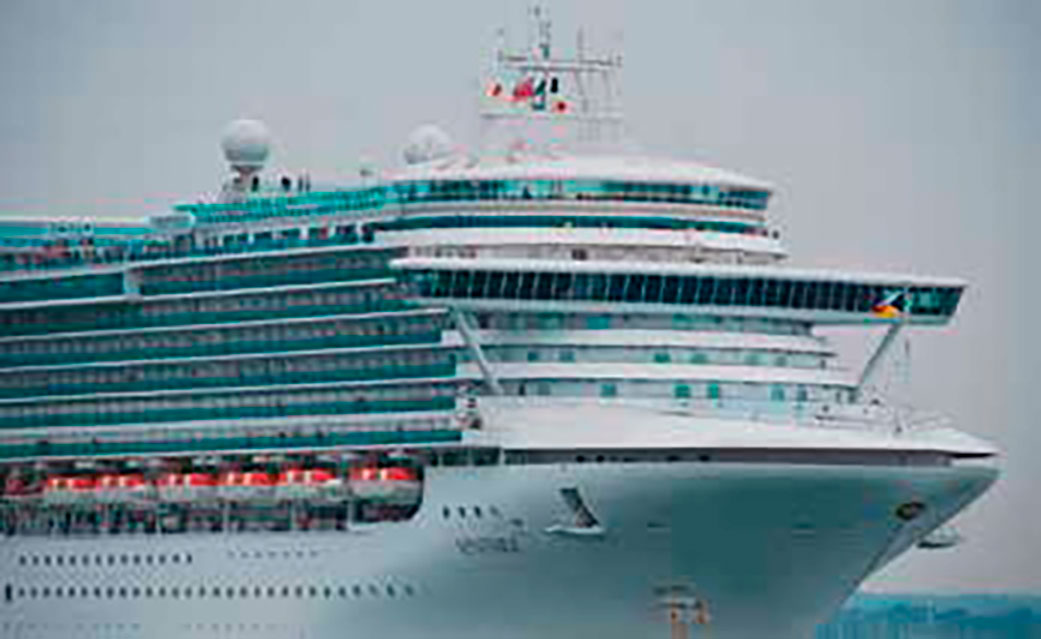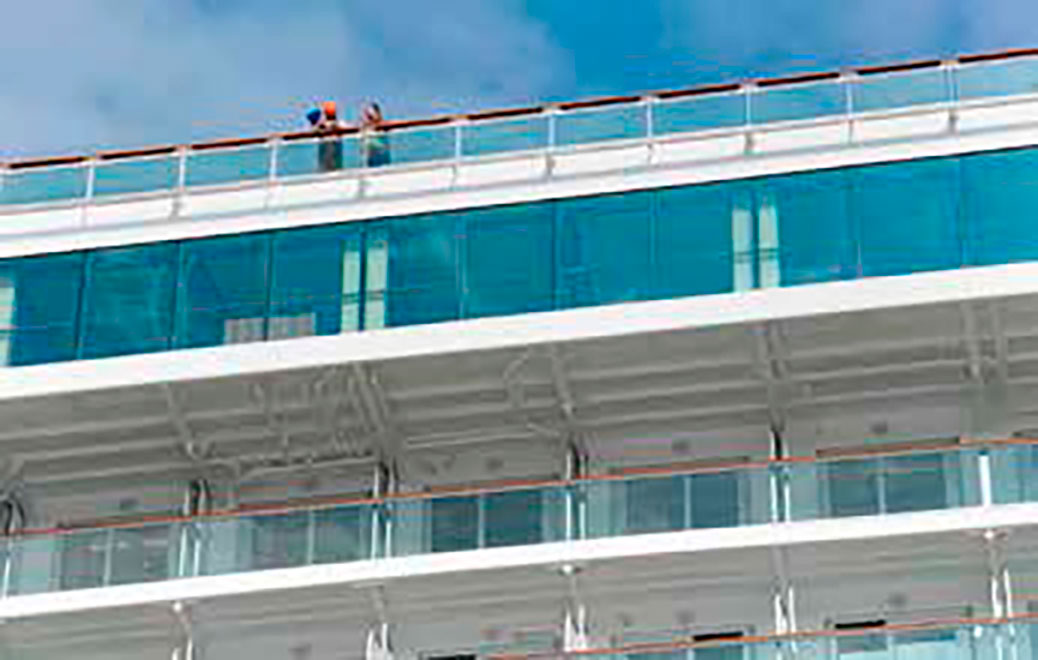ADVANCED INTERLAYER SOLUTIONS



Following the successful, initial adoption of tempered laminated glass with SentryGlas® ionoplast interlayer in the cruise ship the Ruby Princess, Fincantieri, global leader in the building of cruise ships, has specified the same lightweight glazing system from Somec Marine & Architectural Envelopes SRL (Italy) for several elements of the latest flagship to join P&O Cruises' fleet, the Azura.
The reasons behind the adoption of the Somec system include the use of a lighter, and therefore more costeffective, laminate made with SentryGlas® as well as compliance with marine safety standards and high durability in the harsh sea environment. The Azura, built by Fincantieri at the Monfalcone yards near Trieste, Italy, was christened on the 10 April 2010 in Southampton (England) before setting off on its maiden voyage to the central Mediterranean. With its 116,000 gross tons, an overall length of 290 m (951,44 ft), a width of 36 m (118,11 ft) and a maximum speed of 22 knots, Azura is equipped with 1,557 berths spread over its 15 passenger decks, accommodating up to 3096 passengers assisted by 1,226 crew.
Glass balustrades help form balconies for the 900 balconied cabins on decks 8 to 15, and line deck 16 and the sun deck as an effective barrier to passengers. They are used to create a wind shield on deck 19, whilst the same laminate construction is used for the glazing of public corridors of deck 15.
Beyond their visual appeal, the glass balustrades and other elements featuring tempered laminated glass with SentryGlas® interlayer can withstand both human and wave impacts and harsh climates, thereby ensuring passenger safety. For example, all glazing for marine applications is required to withstand constant wind forces of 250 kg/m2, whilst the strength of toughened safety glass intended for use in marine applications must be in compliance with ISO Standard 614:1989.
More recently, Lloyd's Register's safety rules for exterior glass balustrades on ferries and passenger ships now require tempered monolithic glass to be replaced by tempered laminated glass for enhanced safety. In a balustrade system first developed and installed on the Princess Ruby, the lighter, high performance laminate made with SentryGlas® interlayer ensures compliance with the change in Lloyd's Register's safety rules without adding to the overall weight or cost of the system.
"Due to the much enhanced strength behaviour and reduced laminate deflection of the SentryGlas® interlayer versus a conventional PVB laminate, our balustrade system is able to use a thinner laminate construction ((6 mm (15/64 in) tempered tinted glass + 1.52 mm (60 mil) SentryGlas® + 4 mm (5/32 in) tempered tinted glass)) of equivalent thickness and weight to the original monolithic tempered glass," confirms Christian Sossai, engineer at Somec.
Application
Region
Interlayer
Architect
Glazing Contractor

Keep up with the very latest news in laminated glass innovations and procedures by subscribing to our free Laminated Glass News.
Subscribe here